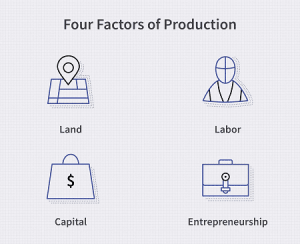Inventory Valuation- Inventory valuation refers to the method used to assign monetary value to the inventory a company holds at a specific point in time. This valuation is crucial for financial reporting and tax purposes, as it affects a company’s cost of goods sold (COGS), profit margins, and overall financial position. Here are the main methods of inventory valuation:
1. First-In, First-Out (FIFO)
- Description: Assumes that the oldest inventory items are sold first.
- Impact: In times of rising prices, FIFO results in lower COGS and higher net income, as older (cheaper) costs are matched against current revenues.
2. Last-In, First-Out (LIFO)
- Description: Assumes that the newest inventory items are sold first.
- Impact: In periods of rising prices, LIFO results in higher COGS and lower net income, which can reduce tax liability. However, it’s not permitted under International Financial Reporting Standards (IFRS).
3. Weighted Average Cost
- Description: Calculates an average cost for all inventory items available for sale during the period.
- Impact: This method smooths out price fluctuations over time and results in COGS and ending inventory values that fall between those calculated using FIFO and LIFO.
4. Specific Identification
- Description: Tracks the actual cost of each specific item of inventory.
- Impact: Useful for businesses with high-value items or unique inventory (e.g., cars, art). It provides precise matching of revenues and expenses.
5. Lower of Cost or Market (LCM)
- Description: Inventory is valued at the lower of its historical cost or its current market value.
- Impact: This approach ensures that inventory is not overstated on the balance sheet, reflecting a more conservative valuation.
Considerations:
- Financial Reporting: Different methods can significantly impact financial statements, influencing decision-making by investors and management.
- Tax Implications: The choice of inventory valuation method can affect taxable income, as shown in the differences between FIFO and LIFO.
- Industry Practices: Some industries may have standard practices for inventory valuation, which could influence a company’s choice.
Choosing the right inventory valuation method depends on various factors, including the nature of the business, financial strategy, and regulatory requirements.
What is Required Inventory Valuation
Required inventory valuation refers to the specific valuation method mandated by accounting standards, regulatory requirements, or organizational policies that a company must use to assess its inventory. This valuation is crucial for accurate financial reporting, tax calculation, and management decision-making. The requirement may vary based on the jurisdiction, industry, and the nature of the inventory held.
Key Aspects of Required Inventory Valuation:
- Accounting Standards:
- Different accounting frameworks (e.g., Generally Accepted Accounting Principles (GAAP), International Financial Reporting Standards (IFRS)) have guidelines on inventory valuation.
- For example, IFRS does not allow the LIFO (Last-In, First-Out) method, while GAAP permits it.
- Regulatory Requirements:
- Some industries are subject to specific regulations that dictate how inventory must be valued. For instance, financial institutions may have particular inventory valuation requirements to ensure compliance with risk management standards.
- Tax Regulations:
- Tax authorities often have rules regarding acceptable inventory valuation methods, which can affect taxable income.
- Companies must adhere to these regulations to ensure compliance and avoid penalties.
- Company Policies:
- Organizations may establish internal policies that dictate the inventory valuation method to ensure consistency and transparency in financial reporting.
- This might include specific guidelines on how to apply methods like FIFO, LIFO, or Weighted Average Cost.
- Materiality and Disclosure:
- Companies are typically required to disclose their chosen inventory valuation method in their financial statements, allowing stakeholders to understand how inventory values are derived.
- Impact on Financial Statements:
- The choice of inventory valuation method can significantly influence a company’s financial position, performance metrics (like net income), and tax obligations.
- Stakeholders use this information to assess the company’s financial health and make informed decisions.
Common Inventory Valuation Methods Required:
- FIFO (First-In, First-Out)
- LIFO (Last-In, First-Out)
- Weighted Average Cost
- Specific Identification
- Lower of Cost or Market (LCM)
Conclusion:
Understanding the required inventory valuation is crucial for accurate financial reporting, compliance with regulations, and effective management decision-making. Companies should regularly review their inventory valuation practices to ensure alignment with applicable standards and regulations while considering their specific business needs.
Who is Required Inventory Valuation

Required inventory valuation pertains to the standards and regulations that dictate how businesses must value their inventory. While “who” enforces or determines these requirements can vary based on context, here are the primary stakeholders involved:
1. Accounting Standards Boards:
- Financial Accounting Standards Board (FASB): Sets accounting standards in the United States (e.g., GAAP).
- International Accounting Standards Board (IASB): Develops international accounting standards (e.g., IFRS), which may include specific inventory valuation guidelines.
2. Regulatory Authorities:
- Securities and Exchange Commission (SEC): In the U.S., oversees publicly traded companies and ensures they follow proper accounting standards, including inventory valuation.
- Local Regulatory Bodies: Different countries may have their own regulatory bodies that oversee compliance with accounting standards and inventory valuation.
3. Tax Authorities:
- Internal Revenue Service (IRS): In the U.S., mandates specific inventory valuation methods for tax reporting.
- Other National Tax Authorities: Countries have their tax agencies that establish rules for how businesses should value inventory for tax purposes.
4. Industry Associations:
- Various industries may have specific guidelines or standards related to inventory valuation based on the nature of their operations (e.g., manufacturing, retail).
5. Internal Management:
- Company executives and finance teams make decisions regarding inventory valuation methods that align with overall business strategy and compliance requirements.
- They ensure that the chosen method accurately reflects the company’s financial position and performance.
6. External Auditors:
- Auditors verify that companies comply with accounting standards and regulatory requirements concerning inventory valuation during financial audits.
- They assess the appropriateness of the chosen inventory valuation method and its application.
Summary:
In summary, required inventory valuation is determined by various accounting standards, regulatory authorities, tax agencies, and internal management. Compliance with these requirements ensures accurate financial reporting, tax calculation, and adherence to legal obligations, which are crucial for maintaining stakeholder trust and achieving business objectives.
When is Required Inventory Valuation
Required inventory valuation is necessary at various points throughout the financial and operational cycle of a business. Here are the key instances when inventory valuation is required:
1. At Financial Reporting Periods:
- Monthly, Quarterly, and Annual Reporting: Companies must assess and report the value of their inventory at the end of each reporting period to prepare accurate financial statements (balance sheet and income statement).
- Year-End Audits: Auditors require a complete inventory valuation for auditing purposes at the end of the fiscal year.
2. During Inventory Count:
- Physical Inventory Counts: Companies are often required to conduct physical counts of inventory periodically (e.g., annually, semi-annually) to verify the quantities on hand and assess their value accurately.
- Cycle Counting: Some organizations implement regular cycle counts to maintain accurate inventory records, which require valuation at each cycle.
3. At Purchase or Receipt of Inventory:
- Valuing Inventory Acquisitions: When new inventory is purchased or received, it must be valued based on the chosen inventory valuation method (e.g., cost of acquisition, shipping, handling).
- Accounting Entries: Accurate inventory valuation at the point of purchase is crucial for accounting records.
4. When Inventory is Sold:
- Cost of Goods Sold (COGS) Calculation: When inventory items are sold, businesses must calculate the COGS using the selected inventory valuation method, affecting income statements and profitability.
- Revenue Recognition: Valuation impacts how revenue is recognized according to accounting standards.
5. When Inventory is Written Down:
- Lower of Cost or Market: If inventory is obsolete, damaged, or otherwise impaired, companies must re-evaluate its value, potentially writing it down to reflect its lower market value.
- End of Financial Period Adjustments: Adjustments may be necessary at the end of accounting periods to ensure inventory is accurately valued.
6. During Tax Preparation:
- Tax Reporting: Businesses must value their inventory accurately for tax returns, as inventory valuation affects taxable income.
- Compliance with Tax Laws: Tax authorities may require specific valuation methods to be followed during tax reporting.
Conclusion:
Required inventory valuation occurs regularly throughout the financial cycle, particularly during reporting periods, inventory counts, acquisitions, sales, and tax preparations. Consistent and accurate inventory valuation is essential for compliance, financial reporting, and effective decision-making.
Where is Required Inventory Valuation

Required inventory valuation occurs in various contexts within a business, each of which is essential for accurate financial reporting, compliance, and operational efficiency. Here are the key places and contexts where inventory valuation is required:
1. Financial Statements:
- Balance Sheet: Inventory is listed as a current asset, and its valuation affects the total assets reported.
- Income Statement: The cost of goods sold (COGS), derived from inventory valuation, directly impacts net income.
2. Accounting Records:
- General Ledger: Inventory valuation affects various accounts in the general ledger, including inventory accounts, COGS, and retained earnings.
- Subsidiary Ledgers: Detailed inventory records must reflect accurate valuations, facilitating internal controls and audits.
3. Inventory Management Systems:
- Enterprise Resource Planning (ERP) Systems: Many businesses use ERP systems to manage inventory, where the required valuation methods are integrated to automate inventory tracking and valuation.
- Inventory Software: Dedicated inventory management tools help businesses track inventory levels and value them according to chosen methods (FIFO, LIFO, etc.).
4. Tax Returns:
- Federal and State Tax Forms: Businesses must report inventory valuation on tax returns, ensuring compliance with tax regulations and determining taxable income.
5. Internal Reports:
- Management Reports: Companies often prepare internal financial reports that include inventory valuation for analysis, forecasting, and decision-making.
- Budgeting and Forecasting: Accurate inventory valuation is crucial for financial planning and budgeting processes.
6. External Audits:
- Audit Reports: Auditors evaluate inventory valuation methods during financial audits to ensure compliance with accounting standards and regulatory requirements.
- Compliance Checks: Regulatory bodies may require documentation and validation of inventory valuation during inspections.
7. Industry-Specific Contexts:
- Manufacturing: Required inventory valuation is critical in determining production costs and efficiency.
- Retail: Retailers must frequently assess inventory valuation to optimize stock levels and pricing strategies.
Conclusion:
Required inventory valuation is necessary in various contexts within a business, including financial statements, accounting records, inventory management systems, tax filings, internal reports, external audits, and industry-specific practices. Accurate inventory valuation is vital for compliance, financial health, and effective operational management.
How is Required Inventory Valuation
Required inventory valuation is accomplished through specific methodologies and processes that determine the monetary value of inventory held by a business. Here’s how it is typically done:
1. Selecting an Inventory Valuation Method:
- First-In, First-Out (FIFO): Values inventory based on the assumption that the oldest items are sold first.
- Last-In, First-Out (LIFO): Values inventory based on the assumption that the newest items are sold first (note: not permitted under IFRS).
- Weighted Average Cost: Calculates an average cost for all items in inventory during a period.
- Specific Identification: Tracks the actual cost of individual items in inventory.
- Lower of Cost or Market (LCM): Values inventory at the lower of its historical cost or current market value.
2. Recording Inventory Transactions:
- Purchase Transactions: When inventory is acquired, record the purchase cost, including shipping and handling.
- Sales Transactions: When inventory is sold, record the cost of goods sold (COGS) based on the chosen valuation method.
3. Conducting Physical Counts:
- Inventory Counts: Perform periodic physical counts of inventory (e.g., annually or semi-annually) to verify quantities on hand and ensure accuracy.
- Cycle Counting: Implement regular cycle counts for continuous accuracy in inventory records.
4. Calculating Inventory Value:
- Cost Basis: Determine the total cost of the inventory on hand using the chosen method.
- Apply Valuation Method: Use the selected inventory valuation method to calculate the ending inventory value and COGS.
- For FIFO, take the cost of the oldest items until the quantity sold is accounted for.
- For LIFO, take the cost of the newest items first.
- For Weighted Average, calculate the average cost of all inventory available for sale during the period.
5. Adjusting for Obsolescence or Damage:
- Write-Downs: If inventory is obsolete or damaged, adjust the valuation to reflect the lower market value, adhering to the LCM principle.
- Document Adjustments: Ensure proper documentation and accounting for any adjustments made.
6. Maintaining Accurate Records:
- Inventory Management Systems: Utilize ERP or inventory management software to track inventory levels, costs, and valuations in real time.
- Regular Reconciliation: Regularly reconcile inventory records with physical counts and financial records to maintain accuracy.
7. Preparing Financial Statements:
- End of Period Valuation: At the end of each reporting period, finalize the inventory valuation and incorporate it into the financial statements (balance sheet and income statement).
- Disclosure: Disclose the chosen inventory valuation method in financial reports to provide transparency to stakeholders.
Conclusion:
The process of required inventory valuation involves selecting an appropriate method, accurately recording transactions, conducting physical counts, calculating inventory values, making necessary adjustments, maintaining accurate records, and preparing financial statements. This systematic approach ensures compliance, accuracy, and transparency in financial reporting.
Case Study on Inventory Valuation
ABC Manufacturing Company
Background: ABC Manufacturing Company produces electronic components and has been in operation for over a decade. The company uses a combination of FIFO and LIFO methods for inventory valuation, depending on the type of components. This case study examines the impact of these methods on financial statements and management decisions over a fiscal year.
Company Overview:
- Industry: Electronics Manufacturing
- Location: United States
- Annual Revenue: $5 million
- Inventory Types:
- Raw Materials: Electronic parts purchased from suppliers.
- Work-In-Progress (WIP): Partially finished goods in production.
- Finished Goods: Completed products ready for sale.
Inventory Valuation Methods Used:
- FIFO (First-In, First-Out): Applied to raw materials.
- LIFO (Last-In, First-Out): Applied to finished goods.
Scenario:
In the fiscal year ending December 31, 2023, ABC Manufacturing experienced significant price fluctuations in raw materials due to market volatility. The following key data was recorded for the year:
- Raw Materials Purchases:
- January: 1,000 units at $2.00 each
- March: 1,000 units at $2.50 each
- June: 1,000 units at $3.00 each
- September: 1,000 units at $3.50 each
- Finished Goods Production:
- Total production: 2,000 units
- Sold: 1,800 units
- Ending inventory: 200 units (WIP)
Financial Data:
- Sales Price per Finished Good: $10.00
- Cost of Goods Sold (COGS) Calculation:
- Under FIFO for raw materials, the cost of goods sold would use the oldest costs.
- Under LIFO for finished goods, the cost of goods sold would use the most recent costs.
Calculation Steps:
- Calculate COGS for Raw Materials (using FIFO):
- For 1,800 finished goods sold:
- 1,000 units from January: 1,000 × $2.00 = $2,000
- 800 units from March: 800 × $2.50 = $2,000
- Total COGS for raw materials: $2,000 + $2,000 = $4,000
- For 1,800 finished goods sold:
- Calculate COGS for Finished Goods (using LIFO):
- For 1,800 finished goods sold:
- 1,800 units from September: 1,800 × $3.50 = $6,300
- Total COGS for finished goods: $6,300
- For 1,800 finished goods sold:
- Overall COGS Calculation:
- Total COGS = COGS for raw materials + COGS for finished goods = $4,000 + $6,300 = $10,300.
- Revenue Calculation:
- Total Revenue = 1,800 units sold × $10.00 = $18,000.
- Net Income Calculation:
- Net Income = Total Revenue – Total COGS = $18,000 – $10,300 = $7,700.
Financial Statements Impact:
- Income Statement:
- Revenue: $18,000
- COGS: $10,300
- Net Income: $7,700
- Balance Sheet:
- Inventory (remaining raw materials):
- 200 units at $3.50 each (remaining from September) = $700.
- Total remaining raw materials: (1,000 – 1,800 from Jan and Mar) + (1,000 from June and September).
- Total Ending Inventory = $700 (from finished goods).
- Inventory (remaining raw materials):
Management Decisions:
- Inventory Strategy:
- Based on the impact of price fluctuations, ABC Manufacturing decided to focus on hedging raw materials to mitigate risks associated with price volatility.
- Cost Control:
- Management implemented stricter inventory controls to reduce excess WIP and minimize carrying costs, improving overall efficiency.
- Financial Reporting:
- The choice of FIFO for raw materials resulted in lower COGS and higher reported income, which positively influenced the company’s financial ratios, appealing to investors.
Conclusion:
This case study illustrates how inventory valuation methods can significantly impact financial reporting and management decisions. ABC Manufacturing’s use of FIFO for raw materials and LIFO for finished goods allowed the company to navigate market fluctuations while optimizing financial performance. Understanding the implications of different valuation methods enables companies to make informed decisions about inventory management and financial strategies.
White paper on Inventory Valuation

Abstract
Inventory valuation is a crucial aspect of financial management that directly affects a company’s profitability, tax liability, and overall financial health. This white paper explores the various methods of inventory valuation, their implications, and best practices for effective inventory management. It also highlights the importance of accurate inventory valuation in regulatory compliance, financial reporting, and strategic decision-making.
Introduction
Inventory is one of the most significant assets on a company’s balance sheet. Accurate inventory valuation is essential for determining the cost of goods sold (COGS), which directly impacts net income and cash flow. This white paper aims to provide a comprehensive overview of inventory valuation methods, their applications, and the challenges businesses face in maintaining accurate inventory records.
1. Inventory Valuation Methods
Inventory valuation methods determine how companies calculate the value of their inventory and COGS. The choice of method can significantly impact financial statements and tax liabilities.
1.1 First-In, First-Out (FIFO)
- Description: Under FIFO, the oldest inventory items are sold first. As a result, inventory remaining on the balance sheet is valued at more recent costs.
- Advantages:
- Reflects current market value on the balance sheet.
- Can lead to higher profits in times of rising prices.
- Disadvantages:
- May result in higher taxes due to increased profits.
- Not always reflective of actual flow of goods.
1.2 Last-In, First-Out (LIFO)
- Description: Under LIFO, the newest inventory items are sold first. This method can provide tax advantages in inflationary environments.
- Advantages:
- Can reduce tax liabilities in times of rising prices.
- Matches current costs against current revenues.
- Disadvantages:
- Not allowed under International Financial Reporting Standards (IFRS).
- May distort financial statements and inventory valuation.
1.3 Weighted Average Cost
- Description: This method calculates an average cost for all items in inventory and applies that average to COGS.
- Advantages:
- Smooths out price fluctuations over time.
- Simplifies record-keeping.
- Disadvantages:
- May not reflect actual cost flow.
- Can lead to understated profits during periods of price increases.
1.4 Specific Identification
- Description: This method tracks the actual cost of each specific item in inventory, used mainly for high-value or unique items.
- Advantages:
- Provides the most accurate inventory valuation.
- Useful for businesses dealing with custom or specialized goods.
- Disadvantages:
- Impractical for large volumes of homogeneous items.
- Requires detailed record-keeping.
2. Importance of Accurate Inventory Valuation
Accurate inventory valuation is critical for various reasons:
2.1 Financial Reporting
- Inventory valuation affects the balance sheet and income statement, influencing key financial ratios such as return on assets (ROA) and inventory turnover.
2.2 Tax Compliance
- The method chosen for inventory valuation can have significant tax implications. Understanding the regulations and impacts is essential for compliance.
2.3 Decision-Making
- Accurate inventory data supports better decision-making in purchasing, production planning, and sales forecasting.
3. Challenges in Inventory Valuation
Companies face several challenges in maintaining accurate inventory valuations:
3.1 Fluctuating Prices
- Rapid changes in raw material and product prices can complicate inventory valuation.
3.2 Obsolescence
- Aging inventory can lead to write-downs, impacting financial health and profitability.
3.3 Complexity of Inventory Systems
- As businesses grow, managing complex inventory systems can lead to inaccuracies.
4. Best Practices for Inventory Valuation
To ensure accurate inventory valuation, companies should consider the following best practices:
4.1 Regular Inventory Audits
- Conduct physical counts and reconcile them with accounting records to ensure accuracy.
4.2 Implementing Inventory Management Software
- Use advanced inventory management systems to track inventory levels, costs, and sales in real time.
4.3 Training Staff
- Ensure that employees are trained on inventory valuation methods and their implications for financial reporting.
4.4 Consistent Application of Methods
- Choose an inventory valuation method and apply it consistently to avoid discrepancies.
Conclusion
Effective inventory valuation is vital for financial health, regulatory compliance, and strategic decision-making in businesses. By understanding the different methods and challenges of inventory valuation, organizations can better manage their inventory, optimize financial performance, and make informed decisions. Implementing best practices in inventory management will further enhance the accuracy and reliability of inventory valuation, ultimately contributing to the overall success of the business.
References
- Financial Accounting Standards Board (FASB). (2020). Accounting Standards Codification.
- International Accounting Standards Board (IASB). (2020). International Financial Reporting Standards.
- Horngren, C. T., Sundem, G. L., & Stratton, W. O. (2013). Introduction to Management Accounting. Pearson Education.
- CIMA. (2019). Inventory Management Techniques.
Feel free to customize any section to fit your specific needs or add any additional details that may be relevant to your context!
Industrial Application of Inventory Valuation
Inventory valuation plays a crucial role in the industrial sector, influencing financial performance, operational efficiency, and strategic decision-making. This document outlines the industrial applications of inventory valuation, highlighting its significance, methods, challenges, and best practices.
1. Importance of Inventory Valuation in Industry
Inventory valuation is essential in industrial applications for several reasons:
- Cost Management: Accurate valuation helps in calculating the cost of goods sold (COGS), which directly impacts profitability.
- Financial Reporting: Proper inventory valuation ensures accurate financial statements, which are vital for stakeholders, investors, and compliance with regulations.
- Cash Flow Management: Understanding inventory levels helps businesses optimize cash flow by managing working capital effectively.
- Decision Making: Accurate inventory valuation provides insights into production planning, purchasing strategies, and sales forecasting.
2. Inventory Valuation Methods in Industry
Different inventory valuation methods are used in various industrial applications, depending on the nature of the inventory and the industry:
2.1 First-In, First-Out (FIFO)
- Application: Common in industries with perishable goods (e.g., food and pharmaceuticals).
- Benefits: Helps maintain product freshness and ensures compliance with health regulations.
2.2 Last-In, First-Out (LIFO)
- Application: Often used in industries dealing with non-perishable commodities (e.g., petroleum and metals).
- Benefits: Can provide tax advantages in inflationary environments by matching current costs with current revenues.
2.3 Weighted Average Cost
- Application: Suitable for industries with homogeneous products (e.g., chemicals and textiles).
- Benefits: Simplifies accounting by averaging costs, which is particularly useful in environments with frequent price fluctuations.
2.4 Specific Identification
- Application: Used in industries with high-value, unique items (e.g., luxury goods, machinery).
- Benefits: Provides precise cost tracking for individual items, ensuring accurate financial reporting.
3. Challenges in Inventory Valuation
Industrial applications face several challenges in maintaining accurate inventory valuation:
- Fluctuating Costs: Rapid changes in raw material prices can complicate inventory valuation and lead to discrepancies.
- Obsolescence: Industries with fast-paced technological advancements must manage aging inventory to minimize write-downs.
- Complex Supply Chains: Global supply chains can lead to difficulties in tracking inventory, complicating valuation efforts.
- Regulatory Compliance: Adhering to various accounting standards (e.g., IFRS, GAAP) can be challenging, particularly for multinational companies.
4. Best Practices for Inventory Valuation in Industry
To optimize inventory valuation, industries should consider the following best practices:
4.1 Regular Inventory Audits
- Conduct periodic physical counts to verify inventory levels and reconcile discrepancies.
4.2 Advanced Inventory Management Systems
- Utilize technology to track inventory in real time, improving accuracy and reducing manual errors.
4.3 Training and Development
- Ensure staff is well-trained in inventory valuation methods and their implications for financial reporting.
4.4 Consistent Methodology
- Choose a consistent inventory valuation method and adhere to it to maintain reliability in financial reporting.
4.5 Collaboration with Suppliers
- Work closely with suppliers to manage inventory levels, reduce lead times, and optimize ordering processes.
5. Case Studies of Industrial Applications
5.1 Automotive Industry
- Scenario: An automotive manufacturer uses FIFO to manage its raw materials inventory, including steel and plastics. This approach ensures that older materials are used first, minimizing the risk of obsolescence and maintaining production efficiency.
- Outcome: The company improved its inventory turnover ratio and reduced waste, leading to cost savings and higher profitability.
5.2 Pharmaceutical Industry
- Scenario: A pharmaceutical company employs specific identification for its high-value drugs. This method allows for precise tracking of costs associated with individual products, especially for those with varying prices and batch production.
- Outcome: The company enhanced its financial reporting accuracy and optimized pricing strategies based on the true cost of individual drugs.
5.3 Retail Industry
- Scenario: A retail chain uses the weighted average cost method for its inventory of clothing items. This approach simplifies accounting and smooths out price fluctuations, making financial reporting more manageable.
- Outcome: The retailer improved its cash flow management by better understanding inventory costs and optimizing purchasing strategies.
Conclusion
Inventory valuation is a critical aspect of industrial operations that influences financial performance, compliance, and strategic decision-making. By employing appropriate valuation methods, addressing challenges, and implementing best practices, industrial companies can optimize inventory management, enhance profitability, and maintain competitiveness in their respective markets. Continuous evaluation and adaptation of inventory valuation strategies are essential for success in an ever-evolving industrial landscape.





